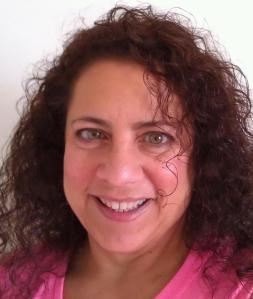For Mammography Tech Technology Has Changed Everything
Reading Time: 3 minutes read
Editor’s Note: Sherri Ford is a Mammography Technologist at Premier Imaging in High Point, NC. She has her A.A.S. degree in Radiological Technology and a B.S. in Health Administration. She has over 19 years experience in the mammography field ranging from mammo-screenings, diagnostics, stereo biopsies and needle localizations. She has worked as a PACS systems supervisor and has designed training programs for occupational nurses regarding osteoporosis and bone density testing. Sherri is also a member of ACR, ASRT and HIMSS.
Q: You have a varied experience as a technologist from a PACs supervisor to mammography. What are the major changes you have seen in the mammography workflow?
A: Technology changes everything. While technology is almost always eagerly awaited in mammography facilities, implementing new machinery often results in workflow growing pains. When digital mammography was introduced several years ago, facilities frequently floundered, causing workflow to slow down. The past five years has seen department workflow changes as processes were perfected, allowing more patients per hour. Many facilities have moved to a paperless system further speeding up workflow. As technologists, we have had to learn how to manage exam times, review images for technical quality in a new medium and not lose sight of the fact that our patients are individuals with feelings. Technology creates efficiency, confidence in the screening process and improved image quality but the equipment is costly. To offset the increased costs, schedules are packed tight and patients are streamlined from registration to exam result. Over the past several years, the most noticeable change in mammography workflow is undoubtedly the rapid pace. While increased volumes are a positive trend, indicating women are committed to the fight against breast cancer and health administrators are committed to providing the services, technologists must balance efficiency and compassion.
Q: Has the economic situation over the last few years impacted how you do mammography?
A: Healthcare was one of the last industries to respond to the economic crisis and is one of the last industries to recover as economic conditions slowly improve. When unemployment peaked many lost their health insurance but not their need for healthcare. Health organizations were faced with the problem of meeting level or increased demand for services with severely diminished revenue streams. Mammography tends to be a loss leader for many health organizations to begin with and the downturn in the economy hit just on the heels of acquiring new digital equipment, further compounding financial challenges. Most mammography centers responded to the conditions by increasing volumes and reducing payroll hours to address cost control but savvy administrators marketed the services to attract new mammography patients and retain the existing ones. Programs became available to provide low or no cost mammograms with the expectation these patients would be a source of referrals, sending new patients to the organization for other health needs.
Q: Do women have specific requests for technology they have heard about and if so what are they asking for?
A: Breast cancer screening relies most heavily on mammography primarily because the system has proven to be successful, accessible and cost efficient. However, mammography does not find all cancers and research continues to find new methods for screening and diagnosis. Periodically, patients will hear or read about new technologies and ask if they are available. Most of the time, patients will ask me about screening methods that do not require compression but rarely mention specific technologies. As healthcare becomes more transparent, however, this may change because the public will have greater access to information about diagnostic testing. Also, patient requests for new technology increase when it is introduced into the community.
Q: Is your facility doing digital breast tomosynthesis?
A: With the recent FDA approval of Breast tomosynthesis, breast cancer screening has a remarkable new tool to aid in earlier detection, especially in women with dense tissue. Despite the success stories tomo has produced, it is not widely utilized in the US yet. Health insurance does not reimburse for tomo exams at this time, considering the technology investigational and many facilities cannot absorb the cost. Some facilities pass the cost on to the patient as an up charge to a mammogram, usually offering the patient the option of having the tomo and paying or declining the exam. I recently had the opportunity to observe several tomo exams and believe this technology will become the industry standard for screening. My facility is not currently offering tomo but is evaluating the technology. Breast tomo offers new possibilities in breast cancer screenings and should be embraced with excitement and anticipation.
